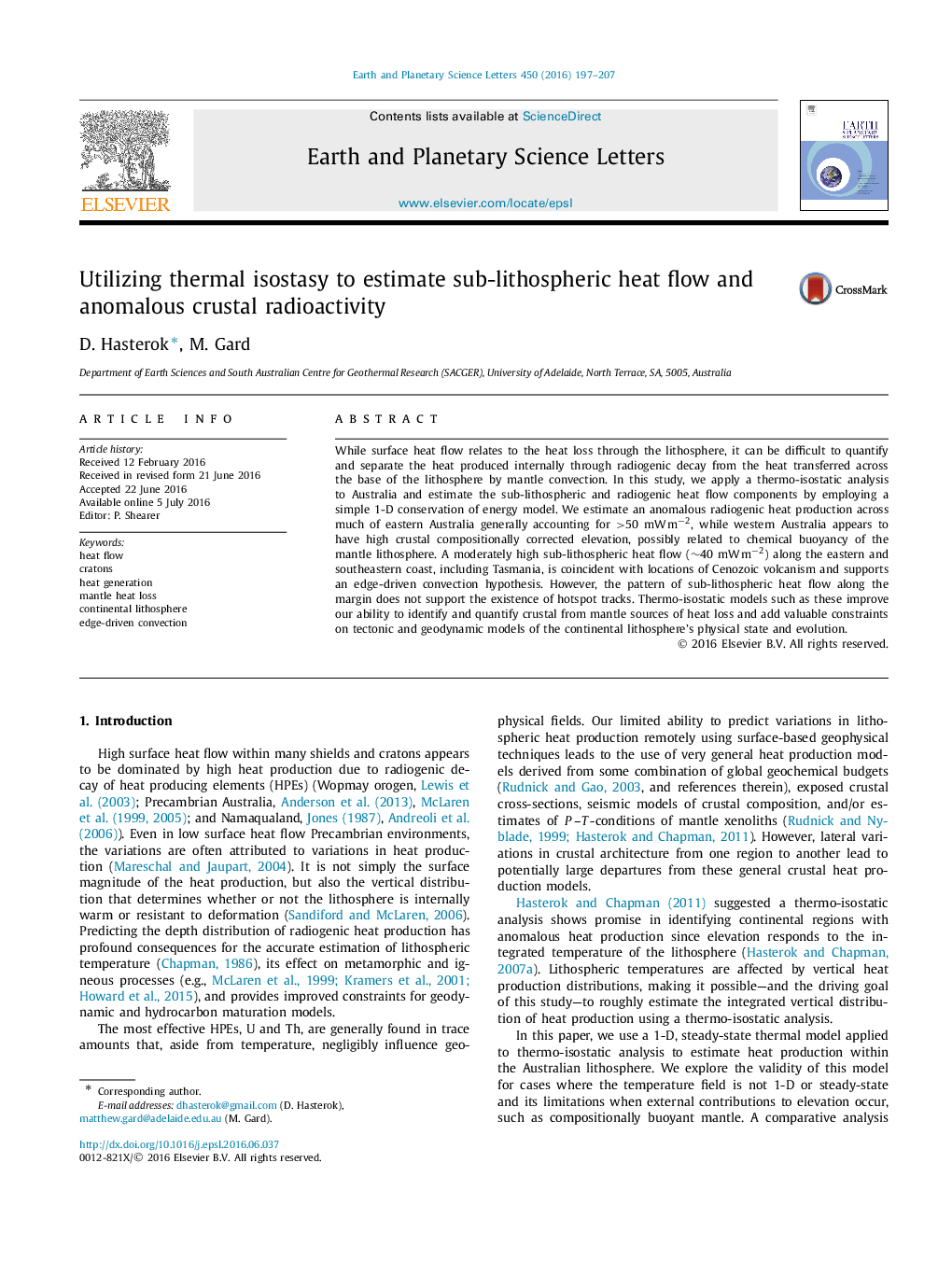| Article ID | Journal | Published Year | Pages | File Type |
|---|---|---|---|---|
| 6427300 | Earth and Planetary Science Letters | 2016 | 11 Pages |
â¢A method for estimating crustal heat production is developed using thermal isostasy.â¢Chemical buoyancy for Archean roots is estimated for Australian cratons.â¢A sub-lithospheric heat flow high along the coast is consistent with edge-convection.â¢Eastern Australian heat production is 2.5 times higher than expected.
While surface heat flow relates to the heat loss through the lithosphere, it can be difficult to quantify and separate the heat produced internally through radiogenic decay from the heat transferred across the base of the lithosphere by mantle convection. In this study, we apply a thermo-isostatic analysis to Australia and estimate the sub-lithospheric and radiogenic heat flow components by employing a simple 1-D conservation of energy model. We estimate an anomalous radiogenic heat production across much of eastern Australia generally accounting for >50 mWâmâ2, while western Australia appears to have high crustal compositionally corrected elevation, possibly related to chemical buoyancy of the mantle lithosphere. A moderately high sub-lithospheric heat flow (â¼40 mWâmâ2) along the eastern and southeastern coast, including Tasmania, is coincident with locations of Cenozoic volcanism and supports an edge-driven convection hypothesis. However, the pattern of sub-lithospheric heat flow along the margin does not support the existence of hotspot tracks. Thermo-isostatic models such as these improve our ability to identify and quantify crustal from mantle sources of heat loss and add valuable constraints on tectonic and geodynamic models of the continental lithosphere's physical state and evolution.
Graphical abstractDownload high-res image (92KB)Download full-size image
